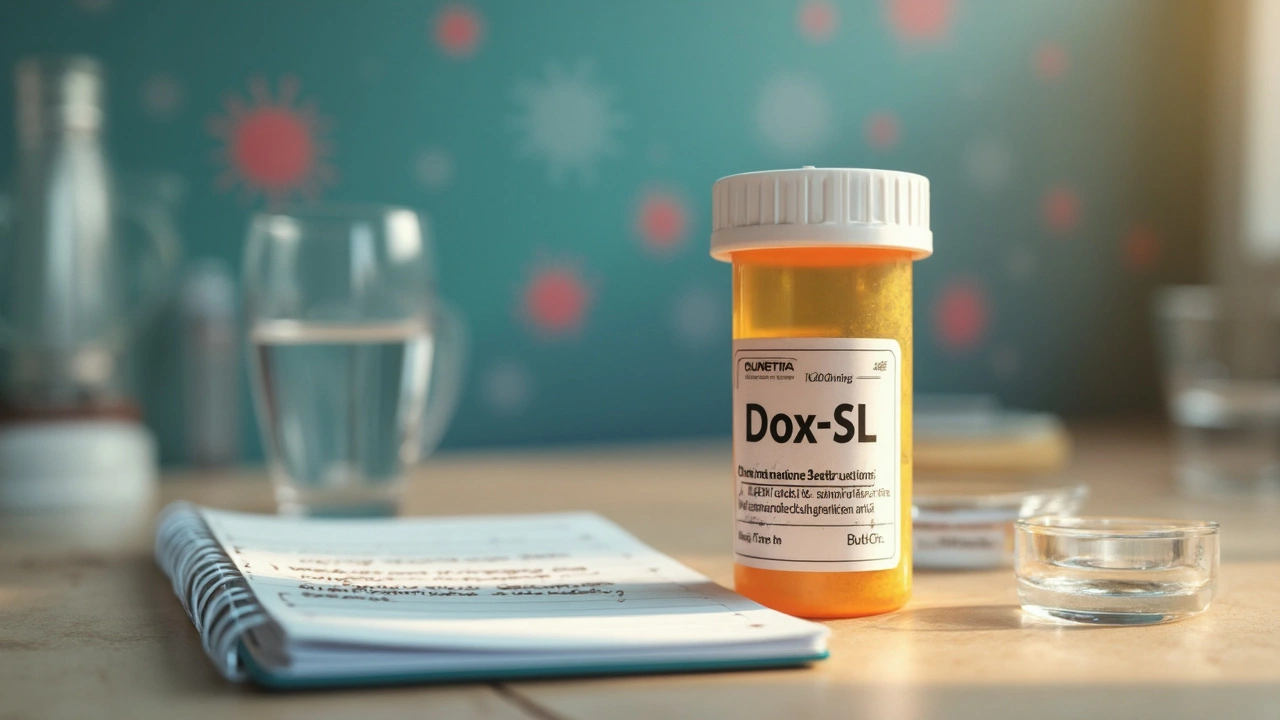Doxycycline Dosage: Simple Guide for Safe Use
If you’ve been prescribed doxycycline, you probably want to know the exact amount to take and the best way to take it. Doxycycline is a broad‑spectrum antibiotic used for everything from acne to Lyme disease, and the dose changes depending on why you’re using it. This guide breaks down the most common dosing plans, explains how to handle missed pills, and gives you a few tricks to keep side effects low.
Common Dosing Schedules
Adults – standard infections: Most infections call for a 100 mg tablet taken once or twice a day. For a simple skin infection, doctors often start with 100 mg twice daily for 7‑10 days. If you’re treating a respiratory infection, the same 100 mg twice daily schedule works, but the doctor may extend the course to 14 days.
Acne: The typical acne regimen is 50 mg (a half‑tablet) once daily, taken with a glass of water. Some dermatologists prefer 100 mg once daily for moderate‑to‑severe cases. The key is consistency – take it around the same time every day.
Lyme disease: Early Lyme disease usually requires 100 mg twice daily for 10‑21 days. For more advanced stages, doctors might increase the dose or lengthen treatment, so follow the prescription exactly.
Malaria prevention: When you’re using doxycycline as a travel prophylaxis, the dose is 100 mg once daily, starting one day before you enter the malaria zone, continuing daily while you’re there, and for four weeks after you leave.
Kids: Children under 45 kg (about 100 lbs) get a weight‑based dose of 2.2 mg per kilogram of body weight, taken once or twice daily. For a 30‑kg child, that works out to roughly 66 mg per dose – usually rounded to the nearest available tablet strength.
Tips to Maximize Effectiveness
Take doxycycline with a full glass of water and stay upright for at least 30 minutes. This helps prevent irritation to the esophagus, a common complaint. Food can slow absorption a bit, but it also reduces stomach upset, so a light meal is fine.
Sun sensitivity is another side effect to watch. Doxycycline makes your skin more prone to sunburn, so wear sunscreen, hats, and protective clothing if you’re outdoors for extended periods.
If you miss a dose, take it as soon as you remember—provided it’s not within 6 hours of your next scheduled pill. In that case, skip the missed dose and continue with your normal schedule. Don’t double‑up; extra doxycycline won’t help and can increase side effects.Always finish the entire prescribed course, even if you start feeling better. Stopping early can let bacteria survive and become resistant, making future infections harder to treat.
Watch for signs of a serious reaction: severe stomach pain, bloody diarrhea, or a rash that spreads quickly. If any of these happen, call your doctor right away.
Finally, keep your medication in a cool, dry place away from direct sunlight. Doxycycline degrades when exposed to heat and light, which can make it less effective.
With the right dose and a few simple habits, doxycycline can clear up infections quickly and safely. If you ever doubt a dose or notice an unexpected symptom, reach out to your pharmacist or doctor—they’re there to help you get the best result.

Doxt-SL: Uses, Dosage, Side Effects, and Practical Guide
Jun, 19 2025Everything you need to know about Doxt-SL: what it treats, how to take it, side effects, and smart tips for safer antibiotic use.
READ MORE